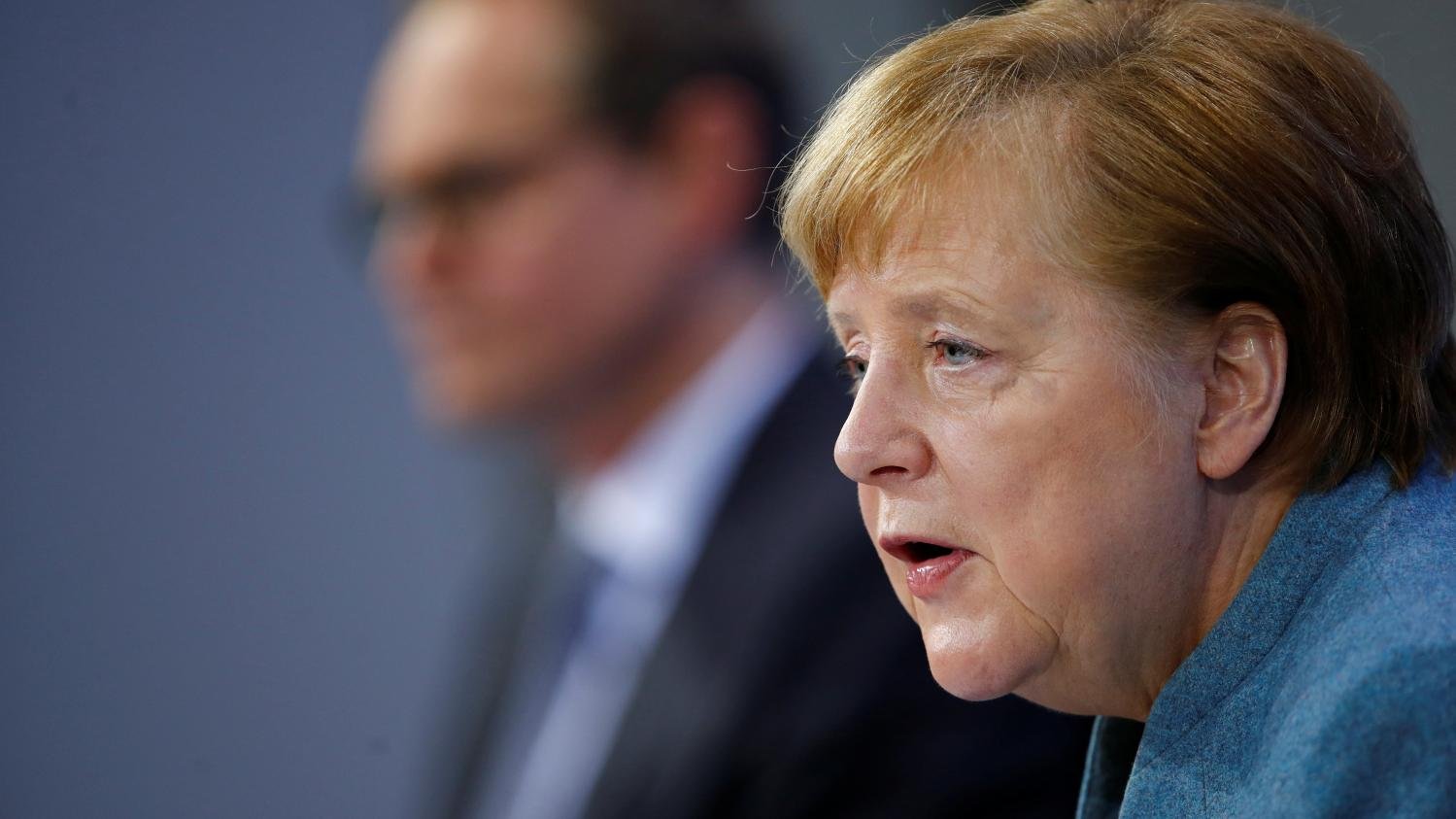
In France, health measures linked to the Covid-19 epidemic are evolving at the rate of defense councils, which meet almost every week around the President of the Republic and the Prime Minister. How are decisions made in less centralized states? A glance at our European neighbors, in Germany, Spain and Italy.
>> DIRECT. Covid-19: the government hopes “a return to a more normal life” “perhaps from mid-April”, says its spokesperson, Gabriel Attal
In Germany, the Chancellor has more of an arbitrator role
Germany is preparing to extend restrictive measures to fight the pandemic until March 28. But it was not Chancellor Angela Merkel who decided it, since she cannot do centralism in a federal state.
It holds a position of negotiator or sometimes arbiter, to seek a point of balance with the leaders of the 16 Länder, the German regions. These leaders, known as minister-presidents, determine policies for health, education and culture. In a health crisis, they therefore occupy a central place. And it’s at a mini-summit like the one on Wednesday afternoon that they all discuss together with the Chancellor what action to take.
These mini-summits have been regular since the start of the pandemic. They are generally held every two or three weeks, and they result in orientations, more than decisions. Each region is free to apply them or not. This decision is taken in the days following the mini-summits, when the 16 regional parliaments are discussing in turn. Thus in Berlin, booksellers are open but not florists, unlike Bavaria, which reopens its beauty salons before other regions. Each state goes there on its own initiative. Federalism only adds a muddled impression to what Angela Merkel would dream of calling a “strategy” of deconfinement.
In Spain, big differences depending on the region
The decentralized model, promoted by the Constitution of 1978, revealed its limits in Spain during the health crisis. We can even speak of “cacophony”. At the end of October, the head of the Spanish government, Pedro Sánchez, declared a new state of health emergency and imposed some general criteria, such as a night curfew, while leaving health management to the regions. Each has therefore gradually adopted the measures it deemed necessary. In terms of catering, for example, establishments currently close at 6 p.m. in Andalusia, at 4.30 p.m. in Catalonia and at 11 p.m. in Madrid.
This has caused political tensions, which have been ongoing since the start of the pandemic. Some regions, especially those ruled by the People’s Party, have repeatedly criticized the management of the socialist head of government. The most virulent remains the president of Madrid, who at first accused Sánchez of too much interventionism, while for months she accused him of being absent subscribers.
Tensions are also rife between different regions. And it should get worse in the coming days because of Holy Week, one of the most important holidays in Spain. Some regions are considering maintaining perimeter lockdowns to limit travel and avoid a fourth wave of Covid, while others are much more lax. The President of Cantabria, meanwhile, asked Sánchez to adopt a common position across the country, so that all regions finally have the same measures.
In Italy, colors depending on the level of restrictions
Italy was the first European country to adopt national containment, just a year ago, to face the first wave of Covid-19. An experience she does not want to repeat, so as not to worsen the health of her economy, which is facing the worst recession in the euro zone.
A three-color system has been set up to distinguish regions according to the risks of Covid: yellow (moderate), orange (intermediate) and red (high). A white zone was added on Monday, March 1, which indicates that an almost total reopening is authorized. This only concerns Sardinia at the moment. In the yellow zones, bars, restaurants and museums are open until 6 p.m. Conversely, in the red zones, containment is strict with the necessary permits to be able to move and businesses that are closed.
The vaccination campaign is also uneven depending on the region. The management of the health system has traditionally been entrusted to the regions, which has given rise to strong disparities between those in the north, which are richer and better organized, and those in the south. This has created controversy and confusion between the central state and the regions.
The new head of government Mario Draghi has decided to take control and put things in order. He sacked the manager in charge of the vaccination campaign to replace him with a soldier. General Figliuolo, “the greatest Italian expert in the logistics of the armed forces”, will be responsible for picking up the pace. He must reach the target of 300 000 daily vaccinations, compared to 100 000 currently. Finally, the government will coordinate regional vaccination plans by centralizing the supply and distribution of doses equally for all regions. This is what Mario Draghi asked his European partners : “Coordinated, rapid and transparent action” to defeat the coronavirus.
